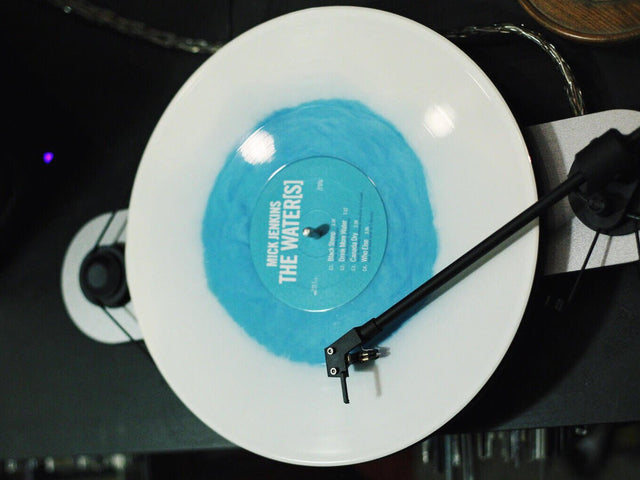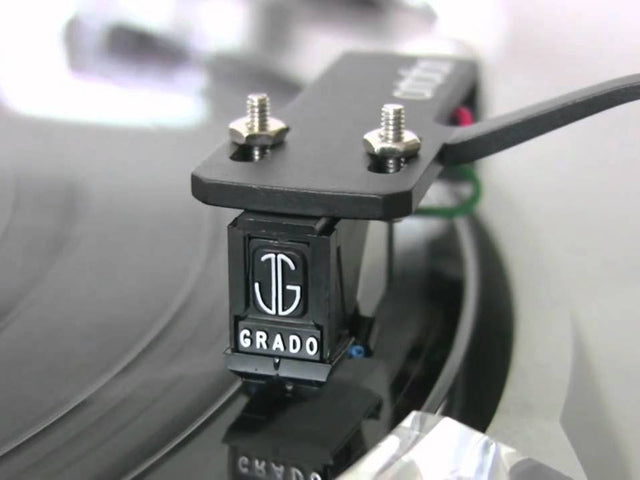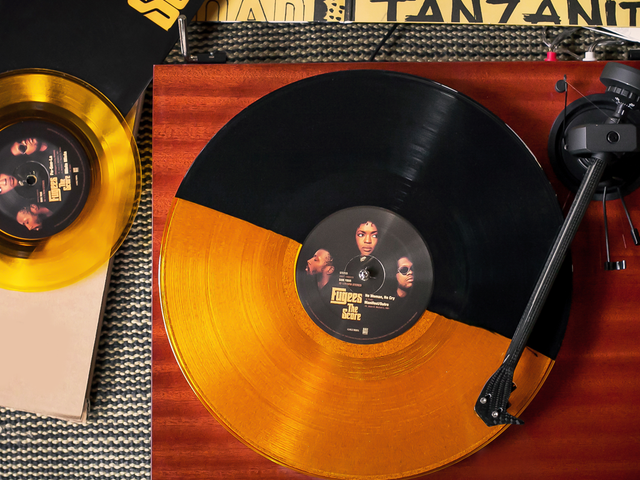Last month, a week before the vinyl record industry celebrated the troublingly overgrown Record Store Day, the BBC published a dubious report claiming that “48 percent of people who bought vinyl [in the previous] month [admitted] they [had] yet to play it.” The article never qualified the poll, conducted by British marketing firm ICM Unlimited, and left a handful of important questions unanswered: how many people were questioned? How old are they? Where do they live? And yet the main takeaway — that nearly half of people currently buying records aren’t listening to them — remains an entirely believable possibility. For plenty of consumers in the current market, records are things you hold as much as things you listen to, trophies for fanship as much as a means of consumption.
It’s in this merch-friendly context that after decades of dormancy the flexi disc is back. True to their name, flexi discs are records pressed onto a thin, flexible surface and can be played on a standard turntable. Most flexi discs are manufactured from sheets of PVC but they can also be made out of a resin-coated cardboard or embossed paper. They’re cheap to manufacture but quick to deteriorate, more quirk than quality. With growing vinyl sales making quarterly headlines, flexi discs are now a relatively common offering on band merch tables or as bonus items in deluxe album packages. Once used primarily as disposable marketing giveaways, flexis are now usually sold as merchandisable collectibles.
Of course, they don’t sound very good. Flexi discs are noisy in the wrong ways and don’t hold up well to repeated plays. Shallow, delicate grooves are the price of extreme pliability. The distortion you hear when listening to a flexi disc is likely the result of your stylus dragging along the bottom of the groove and picking up surface noise along the way. (Vinyl records carry recorded sound on the walls of the groove while the groove bottom itself is void of data but prone to dust.) They skip frequently too (the material is usually slippery) and listening to a flexi exerts enough pressure to quickly or at least eventually compromise the disc in the form of bending or crimping. Some flexis used to have designated spaces to tape a penny, the weight of the coin meant to stabilize the disc during playback.
In some ways, flexis seem like the legitimized step-child of Soviet x-ray vinyl, a subversive form of bootlegging in which citizens illegally pressed censured music — usually it was outlawed American rock and jazz recordings — onto used x-ray film, a recycled material that was inconspicuously repurposed for a forbidden consumer industry. The pliability of x-ray film was more than just a symptom of leftover material, it allowed bootleggers to conceal the records more easily than they could traditionally stiff vinyl. These x-ray “bone records” frequently predated the commercial use of flexi discs, but the flexies have a more legitimate and direct origin story in the form of a patent.
As the music journalist Oliver Wang wrote in an article about flexis, “European inventors took out patents on ‘talking postcards,’ as early as 1905 and the idea was that one could record a message onto phonograph grooves imprinted in resin-covered postcard.” As a consumer industry the postcard messages never seems to have truly taken off, but the idea of groove-carrying flexibility gave rise to creative marketing uses throughout the second half of the 20th century. The most common type of flexi disc was patented and trademarked by a company called Eva-Tone under the name Soundsheets in 1962.
Their low manufacturing cost and inherent novelty gave flexi discs wide and weird appeal as promotional devices. Most famously, beginning in the early '60s, flexi discs were included as inserts in magazines. A copy of Life, for example, might contain a jingle-carrying flexi placement for a Remington Shaver. Years later, in the 1970s, the porno magazine High Society gifted subscribers a flexi disc as part of a special holiday issue; the cover promised a gift in which the adult film actress “Gloria Leonard Makes Love To You Live On Record.” In 1979, National Geographic distributed to readers a narrated field recording called the “[Songs Of The Humpback Whale](https://www.discogs.com/Humpback-Whale-Songs-Of-The-Humpback-Whale/release/1460888.”
Flexi discs were also printed on the back of cereal boxes by laminating acetate film embedded with grooves atop the cardboard packaging. (This paper laminated manufacturing technique never sounded as good as the more prominent Soundsheet approach but remained in use throughout the 1980s.) In 1968, Richard Nixon’s presidential campaign mailed to prospective voters a snippet of his nomination speech on a flexible record with the tag, “Nixon’s The One.” (Nixon won the election that November.)

Of course, flexi discs most frequently carried music. In 1964 The Official Beatles Fan Club issued a free Christmas record special for American members. Besides corny jingles, magazine inserts carried desirable exclusives as well. In 1966 the zany Aspen magazine sent out a flexi disc with a recording by John Cale of the Velvet Underground as part of an Andy Warhol-designed issue. In the 1980s the idea of packaging music via flexis in a magazine peaked with the rise and subsequent fall of the British publication Flexipop!. In a 2007 interview with Stylus, one of the magazine’s writers, Huw Collingbourne, said, “Other music mags may have dabbled in flexis, but Flexipop! made a career of it. We had singles by the top bands of the day — everyone from the Jam to Depeche Mode.” The magazine only lasted for two years, apparently as much a function of its amateur execution as its fast-aging but forward-facing flexi schtick. (Not surprisingly, contemporary collectors pay big bucks for yesterday’s trash and a fickle collector’s industry keeps some decades-old flexi disc originals in demand.)
In that same Stylus article written by Ryan Foley, the author describes the more earnest practice of self-issuing flexi discs along with fanzines. The U.K. indie imprint Sarah Records grew out of a flexi-only fanzine label called Sha-la-la. “It was an attack on pretentiousness, self-indulgence, capitalism,” one of the co-founders, Matt Haynes said, speaking as much about the flexis themselves as the music. “But it was also simply a way for people without too much money to put out records. Rather than just criticize what others were doing, we’d do it properly ourselves.” Nonetheless, despite providing a cheap DIY entry-point for self-releasing music, flexi discs remained marginal as a serious medium for music for obvious reasons.
 Ed Piskor's hip-hop flexi disc.
Ed Piskor's hip-hop flexi disc. The demise of flexi discs in the late 1980s seems obvious in retrospect. As vinyl record sales began to fall and major labels prioritized CDs, giving away free copies of an obscuring medium didn’t make much fiscal sense for musicians or brands.
In recent years, flexi discs have taken on a second life thanks to the San Francisco-based vinyl manufacturer Pirates Press, who advertise themselves as “the only company in the world offering [flexis] to the public.” (A fledgling Austrian company called Vinyl Postcards has apparently taken up their own small-scale and more niche manufacturing operations.) Three years after the company was founded in 2004, Pirates Press internally developed new equipment to pump out flexis in several forms: square cut one-sided and two-sided discs and postcard flexis which accommodate full color prints. Eric Mueller, the company’s founder, told me via email that Pirates Press is currently “making between 400,000-600,000 flexis [a year], spread across the various products” they offer. Tellingly, the company moved the flexi disc operation over to their factory in the Czech Republic in 2013 to lower cost and accommodate demand.
Mueller says that while “a few magazines, newspapers and other publishing companies [have] taken advantage of the perforated ones, to bind into their larger products...for the most part, the square ones and the postcard flexies are by far” the most popular. Recently, Decibel Magazine, a music publication dedicated to metal, began touting a “new, ultra-limited vinyl flexi disc bound into the magazine every month,” while Ed Piskor, a cartoonist releasing a series of historical hip-hop comics, announced that his upcoming issue would come with “an exclusive flexi disc of hip hop gold.”
Despite these nostalgic promotional implementations for flexi discs, Mueller says that “plenty [of customers] use them as retail items too.” He also admitted that due to the inferior sound quality, the majority of the postcard flexis Pirates Press manufactures “are used for promo and not sold.” A couple years ago, the boutique Brooklyn-based hip-hop label Slice of Spice released my personal favorite flexi disc as an accompaniment to a song whose lyrics take the form of a letter. The lyrics are printed out on a playable postcard and smartly designed to look like a handwritten note to an old friend.
In some ways, flexi discs have come full circle as promo items. Even now it’s hard to shake the low-tech weirdness of a flexible record. In their oddity is a perpetual novelty. They used to be frequently tacky throwaways, and while they’re still second-rate records, flexis are once again perfectly relevant marketing tools, both for crowds that like to buy records and not listen to them, and for nostalgic consumers who remember them in their former disposable glory. And either way, they’re good for business all over again.










